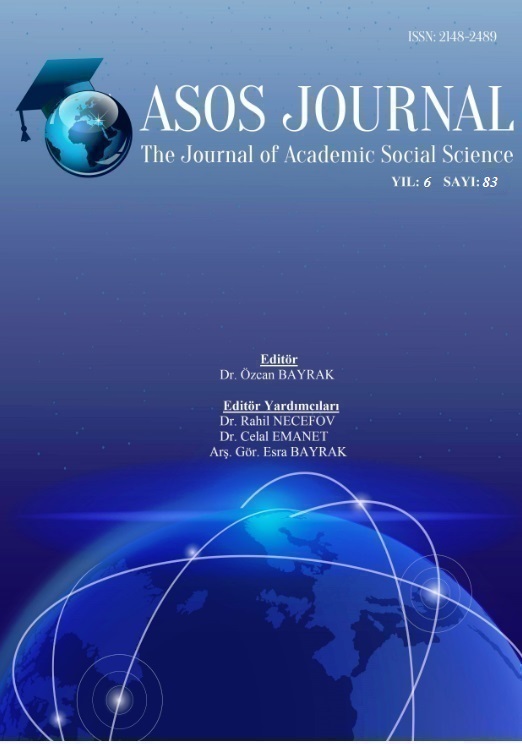ANONİM ŞİBANÎ-NÂME VE BU ESERDEKİ OĞUZ DESTANININ DİĞER OĞUZ-NÂMELERLE KARŞILAŞTIRILMASI
Author :
Abstract
Oğuz-nâmeler, genel anlamıyla Türklerin atalarını ve onlara ait hikâyeleri içeren destansı metinlerdir. Esasen sözlü geleneğin ürünü olan ve zamanla yazıya aktarılan Oğuz-nâmeler, Türk milletinin tarihî ve kültürel değerleri hakkında önemli bilgiler barındırmaları bakımından Türklük biliminin de temel kaynaklarındandır. Oğuz-nâmelerin pek çok varyantı bulunmaktadır. Anonim Şibanî-nâme de bunlardan biridir. Rusya’nın St. Petersburg şehrinde bulunan eser, Moğol İmparatorluğu’nun kurucusu Cengiz Han ile Özbek Türklerinin XVI. yüzyılın başlarındaki hükümdarı Şiban Han’ın soyunu Oğuz Kağan’a bağlaması yönüyle dikkat çekicidir. Bu çalışmada, Anonim Şibanî-nâme’de yer alan Oğuz Kağan ile ilgili bilgiler, isimler, yer adları, tarihî olay ve kişiler Uygur Harfli Oğuz Kağan Destanı, Reşideddin Oğuznâmesi ve Şecere-i Terâkime ile karşılaştırılacak, bu metinlerin benzerlikleri ve farklı yönleri ortaya konacaktır.
Keywords
Abstract
Oghuz-nâmes, with their general meaning, are epical texts, which contain the ancestors of the Turks and the stories about them. Fundamentally, the Oghuz-nâmes, which are the product of the oral tradition and which were transferred to writing in time, are also the basic resources of Turcology from the aspect of sheltering important information about the historical and cultural values of the Turkish nation. There are many variants of the Oghuz-nâmes. The Anonymous Shibanî-nâme is also one of these. The work, which is in the city of St. Petersburg, Russia, draws attention from the aspect that it binds to Oghuz Khan the lineage of Shiban Khan, the ruler of the Uzbek Turks around the beginning of the sixteenth century with Genghis Khan, the founder of the Mongol Empire. In this study, the information, names, place names, historical events and persons related to Oghuz Khan in the Anonymous Shibanî-nâme will be compared with the Uygur Harfli Oğuz Kağan Destanı (The Oghuz Khan Epic in the Uigur Alphabet), the Reşideddin Oğuz-nâme (The Oghuz-nâme by Reşideddin) and the Şecere-i Terâkime (Genealogical Tree of the Turkomans) and will set forth the similarities and different aspects of these texts.





